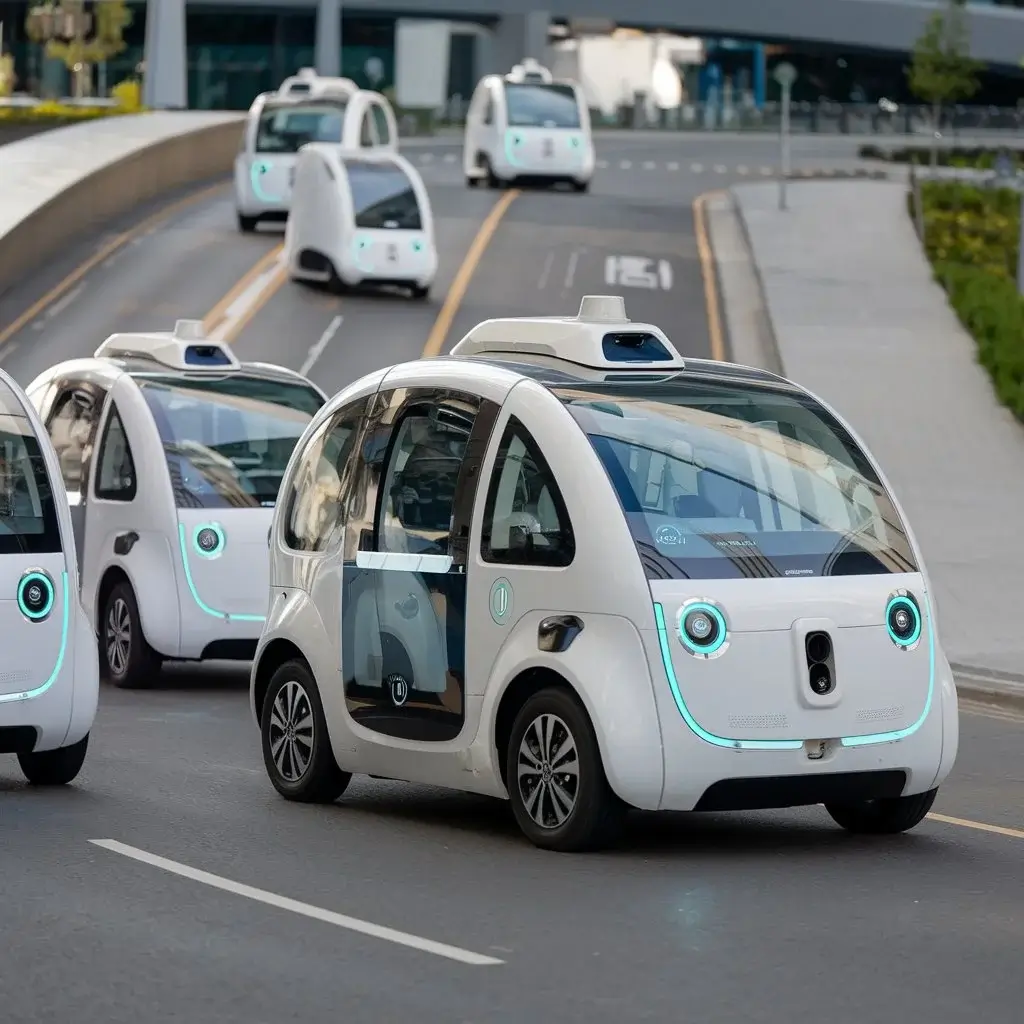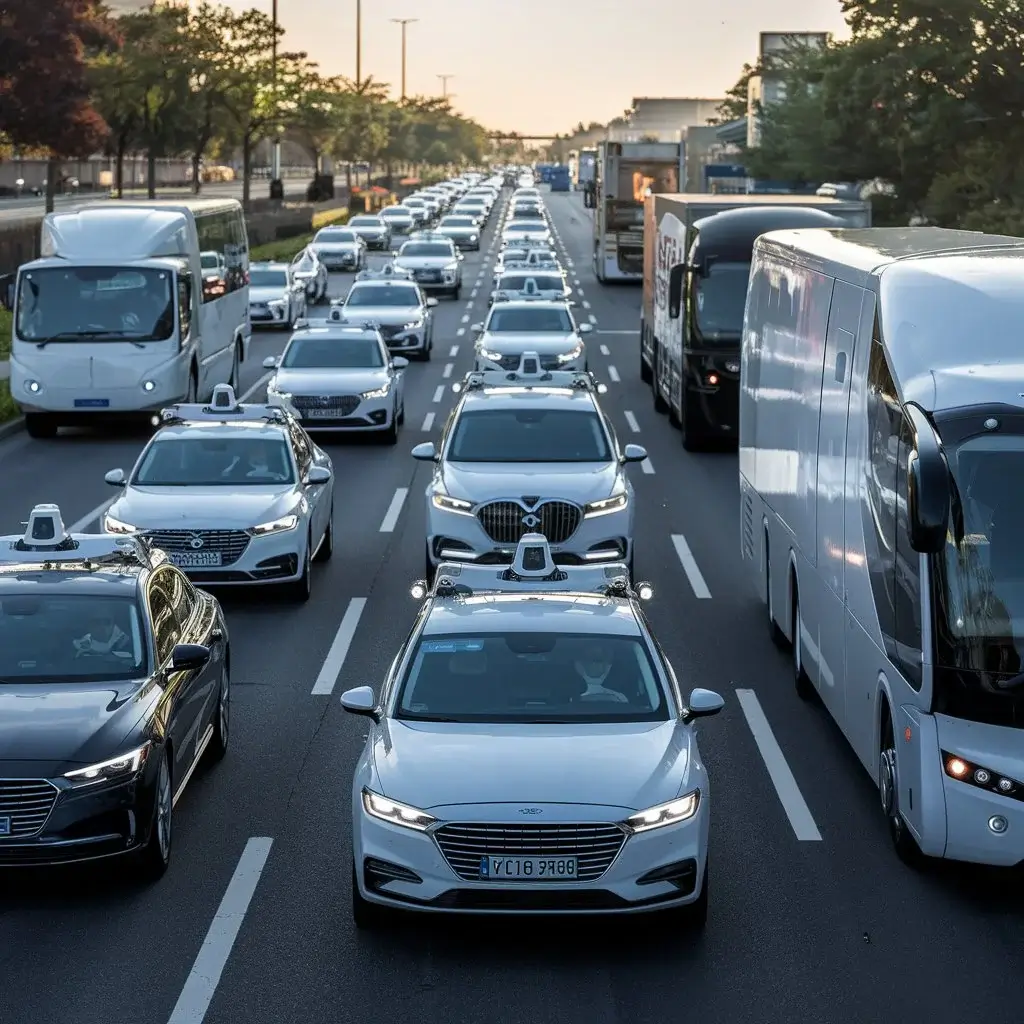Autonomous vehicles, otherwise known as self-driving cars, significantly impact the types of transportation options available to people today. These are the kinds of vehicles that can drive without the interference of human beings, all thanks to the technology incorporated in these cars. As time passes or the world inches closer to the inevitable time of supreme use of autonomous vehicles, it would not be unreasonable to appreciate the presence of negative and positive aspects. This article presents the advantages and disadvantages of autonomous vehicles in a manner that most young students can grasp.

What Are Autonomous Vehicles
Picture of unknown. Autonomous vehicles don’t need a human driver and can drive themselves. This means they don’t have a human object in the cockpit to operate them. Instead, these gadgets primarily rely on sensors, cameras, and advanced artificial insemination (AI) technology to know the environment and make decisions needed when driving.
Definition of Autonomous Vehicles
Thus, would be able to reiterate that such vehicles operate practically entirely independently with no human interface. The car can operate autonomously and does not require any physical input by the driver to steer, brake, or push the accelerator. It is equipped with pretty complex instruments, such as sensors and AI technology, that help it to scrounge its environment and determine its movement.
Levels of Autonomous Driving
There are various levels of automation in driving. At the most basic levels, some assistance from the human driver is necessary for the operation of the vehicles. In the higher levels, the car can move with minimal or no input from a person. The final level, and also the highest one, is Level Five, which means a vehicle drives without human input.
History of Autonomous Vehicles
Autonomous vehicles have been under construction and research for quite an extended period. The concept originated in the 20th century, but it was only in the 21st century that enough technology was available to realize it. There is a race among the likes of Tesla, Google, and Waymo for the self-driving car.
Pros of Autonomous Vehicles
There are a lot of advantages of autonomous vehicles, which can improve road safety and even make everyday life much easier.
Enhanced Road Safety
One of the most beneficial features of autonomous vehicles is that they may improve safety while on the roads. We understand that humans may have lapses in driving. Still, these accidents can be avoided in a self-driving car as technology can act within milliseconds faster than people.
Reduced Traffic Congestion
Autonomous vehicles have the advantage that they can ‘talk’ to one another and the roads as well. This could make traffic smoother, which could lead to a positive impact on traffic jams. The distances between cars can be reduced, and crashes can be avoided.
Environmental Benefits
Autonomous vehicles are likely to cut down some of the pollution emissions. They could use less fuel and hence emit fewer gaseous waste products. Some autonomous cars are electric, so they are even better.
Increased Mobility for Disabled and Elderly
There is potential for autonomous vehicles to be helpful for those unable to operate a vehicle. These cars would allow them to go places without depending on another person to drive. Let them be there.
Time Efficiency and Productivity
With absolutely no driving concern, the use of several ways rides inside the moving car. Passengers don’t need to drive since the car manages the trip. This is a more efficient use of the time spent on travel.
Cons of Autonomous Vehicles
As there are many positives, so there are issues and limitations relating to using autonomous vehicles.
High Development and System Maintenance Costs
A lot of money and subsequent investments are being made in the design of famous vehicles. Self-driving cars comprise complicated systems, and the skills used in designing and keeping various components of these functions are complex and costly. This means that, at least for the time being, these vehicles can perhaps be pricier than ordinary vehicles.
Job Loss in Driving Industries
Autonomous vehicles may result in the redundancy of individuals employed as drivers, such as taxi operatives, truck drivers, and delivery van operatives. As self-driving cars continue to be embraced, there lies the possibility of not requiring many human drivers.
Cybersecurity and Privacy Issues
Because of both the advantages and disadvantages of technology in modern autonomous vehicles, hackers can compromise the systems. And there is also a problem of how many of these cars take a person’s information, hence impinging on their privacy.
Legal and Ethical Considerations
There are many legal and ethical questions about autonomous vehicles. Self-driving car makers and users can freely and happily provide cars without consultation.
Limited Functionality in Complex Settings
The difficult task remains of autonomous vehicles crumbling under abuse in complicated weather or city storming conditions. These vehicles may have difficulty understanding their surroundings and positioning themselves in extreme settings.
Environmental Effects of Autonomous Vehicles
People’s attitudes regarding the environmental impact of self-driving cars may change for good or bad.
Possibility of Decreased Emissions
By following the correct driving patterns and using electric power, self-driving cars would also lessen the pollutants released into the atmosphere. It will also be good for the environment owing to toxic pollutants, especially in cities where the problem is acute.
Impact on Urban Planning and Infrastructure
It is foreseeable that there will be some changes in the design of cities as more and more self-driving cars appear on the roads, increasing the demand for greater use of the streets, parking places, or the building of new road structures, such as traffic lights. The autonomous automobile may change how cities would like to build their infrastructural layout for the betterment of the transport systems.

Economic Impact of Autonomous Vehicles
Once fully applied to society’s economy, autonomous vehicles or self-driving ones will redefine the economic spheres with advantages alongside their shortcomings.
Costs of Implementation
The components and supporting technology needed for autonomous vehicles to function are solid economically. The construction, management, and utilization of such systems would be expensive for their manufacturers and cities that will have to make system changes to implement this.
Economic Benefits for Tech and Auto Industries
On the contrary, the progress of developing self-driving cars would also create new possibilities for the emergence and growth of the technological and automotive industries. These companies manufacture, enhance, and upgrade these vehicles, and their economies would increase.
Technological Challenges in Autonomous Vehicles
There are still so many steps that need to be taken before the public can freely purchase and use self-driving vehicles, which progress through automatic driving systems and the advances made on such cars.
Sensor and Data Accuracy
Each autonomous vehicle is fitted with sensors that act as eyes to the vehicles regarding the surroundings. Such readings must be exact, especially in harsh conditions or when surrounded by many contaminating objects. This sensor improvement factor must be dealt with.
The Role of Machine Learning and AI in Decision Making
Like self-driving cars, autonomous drones also deploy a fair amount of machine learning and AI in decision-making. These systems need to be trained to react to a lot of scenarios, but it is noted that there is still room for enhancement to make AI more intelligent and more predictable.
Vehicle-to-Road Communications
This is how the road informs the car’s GPS, its sensor technology informs maps and traffic signs, and how this information is interpreted when the vehicle is moving. This is also known as vehicle-to-infrastructure communication. Its purpose is to relay the communication of the vehicles to the critical components such as the traffic lights and road signs, among others.
Attitudes Towards Autonomous Vehicles
The attitude of the people towards autonomous cars will inform, to a great extent, how fast these cars will be accepted.
Public Trust and Acceptance
Millions of people like self-driving cars but do not think they will trust the vehicle without any human operator. Yet, it will take a while before the public accepts these vehicles, especially when safety is questioned. Firms must prove that acquiring the autonomous car will be worth it.
Change in Trends in Car Ownership
Autonomous vehicles may change the attitudes of individuals who own cars. Rather than purchasing their private cars, people may prefer to order self-driving taxi cabs and ride-sharing or pooling, thus reducing the number of public vehicles.
Autonomous Vehicles in Different Sectors: How Are They Relevant
Autonomous vehicles do not only serve personal transport. Their usage can be applied in many other possible ways.
Autonomous Vehicles in Public Transport
Autonomous trains or buses can help streamline and reduce public transport costs. With driverless vehicles, the operations tend to be faster and more efficient as there are no human drivers in the control.
Autonomous Delivery Vehicles
Companies are already evaluating the use of self-driven vehicles for delivery purposes. This would allow the cars to deliver packages or even food without the need for a human driver, thus reducing the time for delivery.
Autonomous Ride-Sharing Services
Self-driving vehicles may be adopted by ride-share services like Uber to ferry passengers around. This would make transportation more efficient, fast, and available to more people by reducing the cost of rides.
The Way Forward: What Do We Expect about Autonomous Vehicles
The happy note is that autonomous vehicles will undoubtedly be taking to the roads in the future. However, the road leading to full automation is still long and arduous.
Adoption Timeline of Autonomous Vehicles
It may take several more years before people can witness semi-autonomous cars all over the roads. As far as the technology is improving, this is not yet the case as there are still numerous technical, legal, and moral questions to sort out.
Role of Governments and Regulations
The speed of adopting autonomous vehicles will depend heavily on governments. They must establish laws and guidelines that promote great ideas and technologies without ignoring safety.
Autonomous Vehicles and Smart Cities
As we look ahead, one would imagine that self-driving automobiles will form part of the future of smart cities. These cities will leverage technology to ensure that transportation entails less time, is cleaner, and is more efficient, using regular self-driving vehicles.
Сonclusion
There will likely be major changes in the use of vehicles in the future because of autonomous vehicles; many users will experience certain advantages such as efficiency, convenience, a decrease in traffic jams and pollution, and many other factors. Some effects will have to be pondered, such as very high prices, people losing their jobs, and risks deriving from it. Over time, one innovation will blur into the routine, and people will not be surprised to see autonomously driven vehicles roaming the streets. However, there is a need to look into the challenges and questions that come alongside such technology before that time comes.